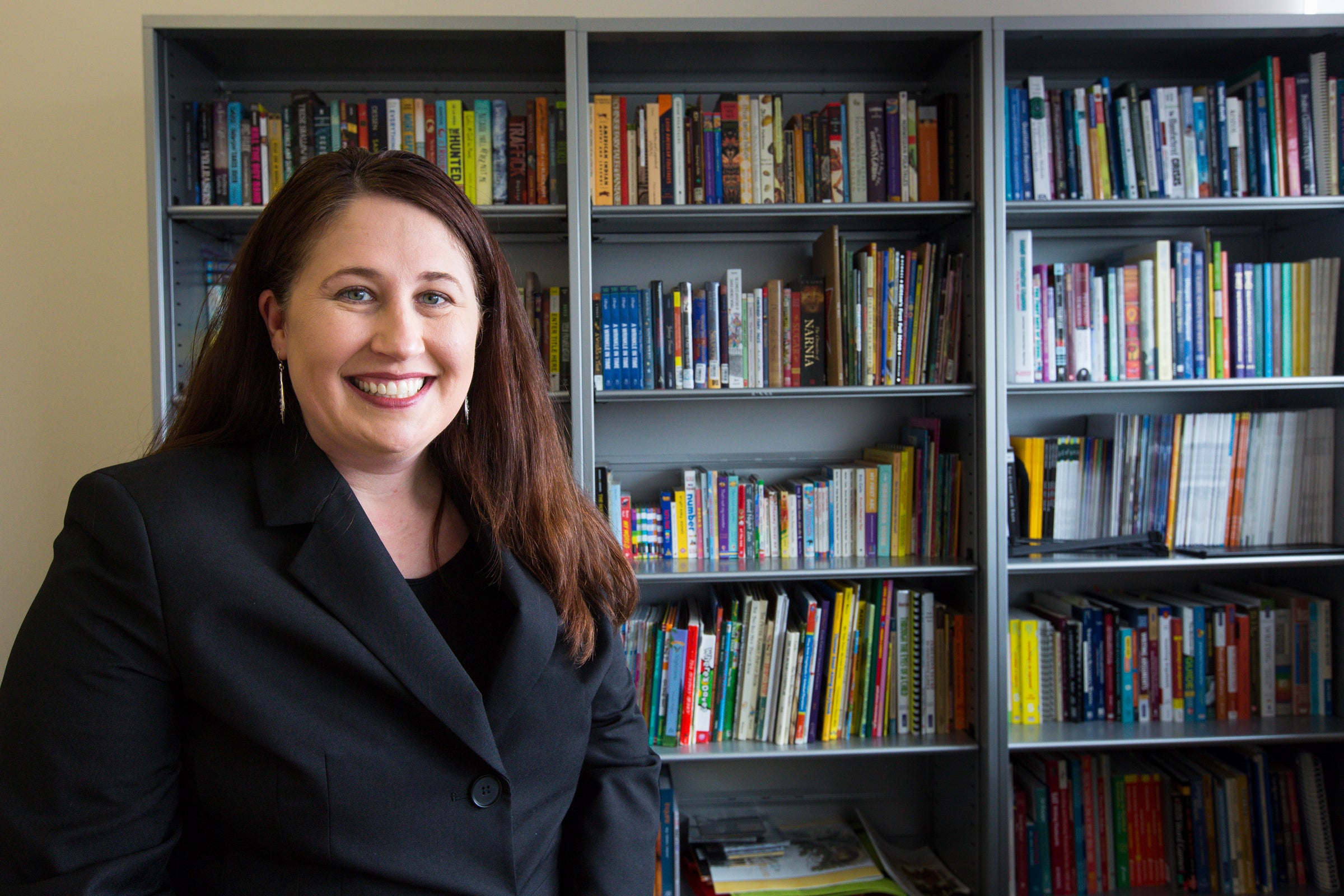Editor's note: This is part of a series highlighting new faculty members at Arizona State University. Find a complete listing of new 2015-2016 faculty here.
Trying to prove you’re cool rarely works out.
Just look at famed “Austin Powers” villain Dr. Evil who — in a most unfortunate attempt at proving his “with-it-ness” — unwittingly showed he was anything but.
“I’m hip,” he offered desperately before launching into an unnervingly robotic rendition of the Macarena.
Except he wasn’t. At all. And kids can pick up on that.
Wendy Williams — whose research looks at the out-of-school writing practices of culturally diverse spoken-word poets and rappers — knows that, which is why she leaves it to her young research subjects to out-cool each other.
“I don’t listen to rap,” she confessed. But she does recognize the profound effect hip-hop culture has had on today’s youth, and how incorporating that into the classroom can provide an authentic way for teachers to reach students.
The notion struck Williams, a newly appointed assistant professor of English education in ASU’s College of Letters and Sciences, while hosting a talent show at a Phoenix high school where she was teaching sophomore honors English.
ASU assistant professor of English education Wendy Williams in her office on the Polytechnic campus. Photo by Charlie Leight/ASU Now
“There were these two amazing rappers, and I just thought, ‘Whoa, how come I never had these students in my class?’ ” said Williams. “They should have come through the honors track, and that kind of upset me and it got me thinking.”
Soon after, Williams took a doctoral seminar at ASUWilliams received her bachelor’s in secondary education, her master’s in English education and her doctorate in English education all from ASU. on investigating youth literacies. She recalled the young rap duo and thought, “OK, this is the perfect opportunity to go back, find those two kids and look at their literacy practices and find out exactly what they were up to outside of school.”
So Williams tracked them down and conducted a small study with just the two of them.
What she found was that their process involved taking apart existing rap songs and building their own around the stripped-down beats. In essence, explained Williams, they were using the existing songs as a sort of “scaffolded learning tool,” a commonly utilized method in teaching English language arts.
“That was interesting because we tend to think that there’s ‘in-school’ and ‘out-of-school’ [ways of learning], and it’s this kind of dichotomy where it’s one or the other,” said Williams. “But often there are these really cool overlaps — we call it ‘third space.’ It’s the meeting of the unofficial kind of out-of-school space and the official space of school.”
The Goldilocks nature of that third space creates an environment where students and teachers can share personal, traditionally “non-school” interests like rap music while still learning vital curricula such as sentence fluency and organization.
Bringing one’s personal interests into the mix also requires a certain vulnerability, Williams said. And while some may scoff at the idea of a student-teacher relationship not based solely on authority, she embraces it whole-heartedly:
“It kind of clears the air, and students can see that you’re being real.”
That “realness,” that vulnerability, is essential to making genuine connections through — and thereby building meaningful appreciation for — creative subjects like language arts.
Williams put that fact to the test when she moved on to studying another out-of-school youth writing practice: spoken-word poetry.
“When I was with [the students], studying them, I wrote a poem and shared it with them,” she said. “I wrote a poem about my mom dying because I wanted to share the most painful memory I had. And I can say first-hand, when you get up there and you share your most painful story to a loving, supportive group, it feels amazing. … There’s a reward in exchange for that vulnerability.
“So that’s something that’s important in [my] bookWilliams is writing a book based on her research titled “Youth Spoken Word Poets in the Urban Southwest.”, just the ways that poets have to be open to being vulnerable and that that’s OK. And that we become stronger through that process.”
Williams hopes to pass on these and other important lessons to her students at ASU, where last semester she taught “Methods of Teaching English Composition” and “Young Adult Literature.” This semester, she’ll be teaching “Children’s Literature” and “Methods of Teaching English Language.”
She’s looking forward to instilling in her students a passion for supporting all kinds of creativity in the classroom. Her favorite, though, she must admit, is writing.
“You can use writing for so many different things,” said Williams. “You can write to work through a problem, you can write to learn. You can write to help shape your future. … It’s such a versatile form. Even more than that, I think it’s personally rewarding, and it has all these extra benefits.”
More Arts, humanities and education
AI literacy course prepares ASU students to set cultural norms for new technology
As the use of artificial intelligence spreads rapidly to every discipline at Arizona State University, it’s essential for students to understand how to ethically wield this powerful technology.Lance…

Grand Canyon National Park superintendent visits ASU, shares about efforts to welcome Indigenous voices back into the park
There are 11 tribes who have historic connections to the land and resources in the Grand Canyon National Park. Sadly, when the park was created, many were forced from those lands, sometimes at…
ASU film professor part of 'Cyberpunk' exhibit at Academy Museum in LA
Arizona State University filmmaker Alex Rivera sees cyberpunk as a perfect vehicle to represent the Latino experience.Cyberpunk is a subgenre of science fiction that explores the intersection of…

